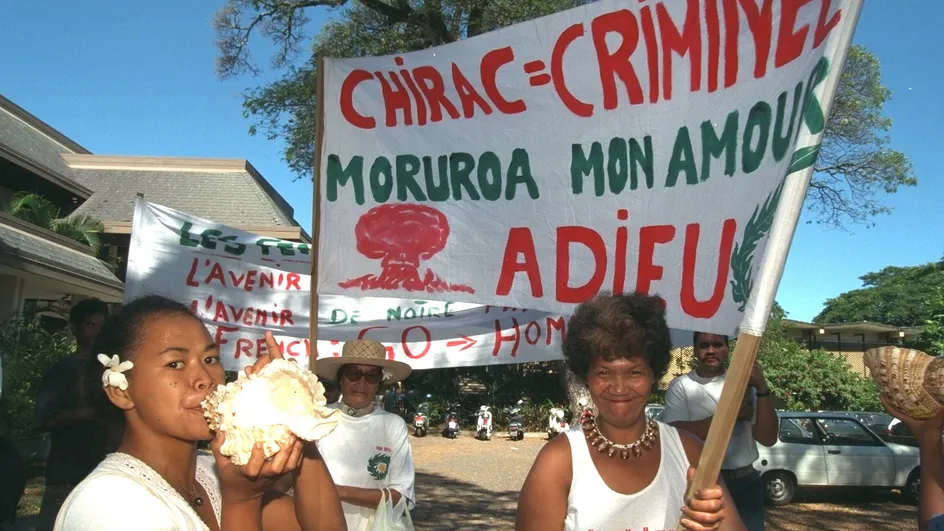
Demonstration in French Polynesia, August 1995. Credits: Getty Image.
In an open letter to both researchers and educators whose object of study concerns marginalized, disenfranchised, and dispossessed communities, and to those communities themselves, particularly Indigenous communities (2009), Unangax̂ scholar Eve Tuck addressed the question of framing research through the lens of damage and depletion. “In damaged-centered research,” she writes,
“one of the major activities is to document pain or loss in an individual, community, or tribe. Though connected to deficit models […] damage-centered research […] looks to historical exploitation, domination, and colonization to explain contemporary brokenness, such as poverty, poor health, and low literacy.
Tuck 413
“Common sense,” she continues,
“tells us this is a good thing, but the danger in damage-centered research is that it is a pathologizing approach in which the oppression singularly defines a community. […] In a damage-centered framework, pain and loss are documented in order to obtain particular political or material gains.”
Tuck 413
There is thus a fundamental caveat to solely focusing on the historical violence and damage done to a community in order to elicit change: it frames (and feeds) a vision of existence circumscribed to pain, trauma, and brokenness. “It is a powerful idea to think of all of us as litigators, putting the world on trial,” Tuck concedes. “[B]ut does it actually work? Do the material and political wins come through? And, most importantly, are the wins worth the long-term costs of thinking of ourselves as damaged?” (415).
To interrupt the pattern, then, Tuck suggests two entwined steps: to have a community-led research, and to frame this research through desire rather than damage. Desire, she warns, is not as an opposite to damage, but an antidote that “stops and counteracts the effects of a poison,” which is, at bottom, framing Indigenous and disenfranchised communities as damaged (416). Desire, then, “is the song about walking through the storm, a song that recognizes rather than denies that pain doubtlessly lies ahead” (419).
Nuclear Cartographies is therefore a project that seeks to emulate Eve Tuck’s teaching. Though we must fundamentally acknowledge that the atomic circuit is driven by different forces of imperialisms, dug through the lands of Indigenous communities in order to (quite literally) power settler societies, sometimes thousands of miles from waste and fuel sites, we must also highlight the ways in which it is challenged and, most importantly, exposed. Despite the radioactive poison and the settler cover-ups, Indigenous and disenfranchised communities have long resisted nuclear imperialisms everywhere.
In this section of the website, you will find an expanding database of what we may call “counter-discourses” of resistance. From novels to poetry; paintings to performances; dances to songs; academic articles to journalistic inquiries and political actions, opposition thrives, drawing a different kind of map, overlaying that of the atomic circuit, showing routes and networks of coalition that exceed national borders.
This database also seeks to pool ressources from the community to better serve the community. As such, you are invited to contribute data about counter-discourses by following instructions in the link below.
Works cited
Tuck, Eve. “Suspending Damage: A Letter to Communities.” Harvard Educational Review, vol. 79, no. 3 (2009): pp. 409-427.